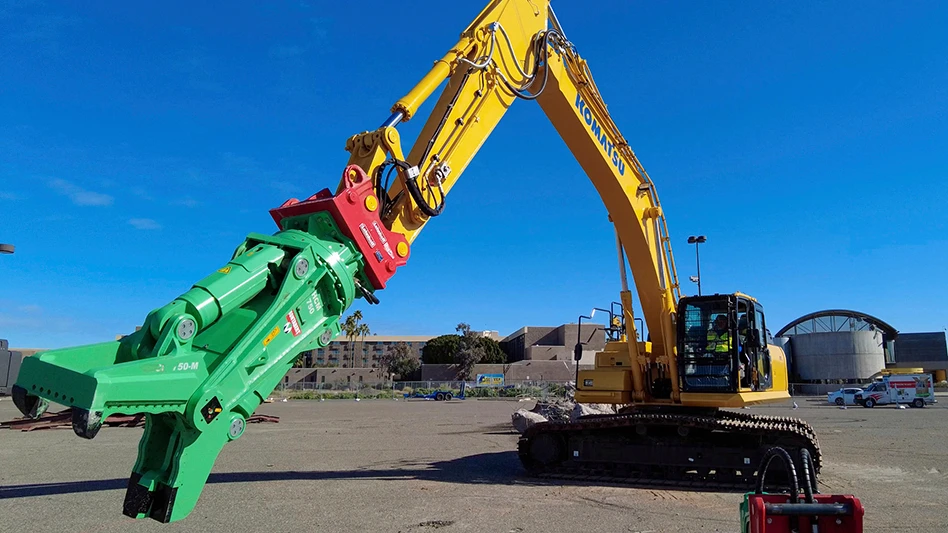
How much of your barn, garage or basement is full of material you pulled out of projects that you just could not bear to toss into the landfill? It’s likely way too much. Whether we are builders, demolition contractors, deconstructors or developers, we are in this business because we love buildings and machines and the materials in them. I was a remodeler/cabinetmaker for 20 years, and I know the pleasure of ripping old material out and the pain of throwing away good material. Yet, our barns and garages can only hold so much.
Soon after I left my previous career, I discovered the building material reuse industry, and throughout the last 15 years, I have watched this industry expand. Whether it’s reuse retail organizations and businesses, lumber and architectural millwork businesses or deconstruction outfits, the industry is growing.
When writing this article, I thought about what I didn’t know years ago and what folks in the construction and demolition (C&D) recycling industry might want to hear about.
THE REASON
Why reuse? Because raw materials should no longer be turned into finished products then moved down the chain until they turn into waste. The recycling industry has done an amazing job over the last 30 years. “Give a hoot, don’t pollute” and other early messages changed our nation’s way of thinking about materials. However, over time, our consumer culture began re-emphasizing the allure of buying everything shiny and new. If an item wasn’t straight from the factory, it was somehow dirty and dangerous. That was the seed that was planted in our culture that led to the incredible waste in our society.
Being in the building and reuse industries allows an individual to know what can, and should, be saved, which always ends up being a lot more than most people recognize. Historic materials are not the only items that are reusable, either. Windows, doors, flooring, dimensional lumber, plumbing, built-ins, lighting and hardware can be reused. Sometimes items are reused for needs-based reasons, sometimes they’re reused for craft- or mission-based projects, and sometimes materials are reused just because the material is so gorgeous that one can’t fathom letting it go to waste.
The real trick, however, is understanding the condition of the material. People will buy used building materials if they are in reasonable shape. If the condition is good enough, if it is not degraded too far by either extraction or transportation, then the inherent value of the material or product will be preserved. You would be amazed how quickly the value drops in reused building materials when they are not handled properly. This is a critical factor—once the value is lost, then all the incentive to save a piece is gone.

For building material reuse to be a viable industry, a healthy profit margin is required. Take away the inherent value in the salvaged material, and it’s incredibly hard to gain that margin back. Labor to extract the materials or products, the cost to handle and ship them and the cost to market and warehouse or retail them all demand that materials be removed and handled in such a way that the value remains as intact as possible.
This is where professional deconstruction services become important.
PIECE BY PIECE
Deconstruction is the process of taking something apart in a way that preserves its integrity. In essence, the same care that went into constructing the building must go into taking the building apart so materials can be salvaged. Whether it’s a set of kitchen cabinets, a house, a barn or a 100,000-square-foot factory, care must be taken to remove and transport its components in a secure manner. This is an essential part of preserving the value of these materials, as well as the sequestered value of the raw materials and the embodied carbon within those materials.
For example, almost every remodeled kitchen already has had a kitchen in it previously. A contractor can get behind a cabinet with a crowbar and pull it until it pops off the wall or take a bit more time to figure out how and where it’s attached and gently slip it off. There lies the art and science of deconstruction.
Whether it’s a set of cabinets or a house, it comes down to the same thing: Taking the time to disassemble, remove and transport these materials right is how we retain their value and potential profit. Patience and meticulous execution, rather than speed, can pay dividends down the road.
Building material reuse organizations and businesses are located across the country, and they are getting easier to find thanks to the increasing emphasis on reducing waste, especially C&D debris. When it comes to skilled, experienced deconstruction contractors, they’re a bit tougher to find. Deconstruction is a small, but growing, subindustry of building material reuse. However, they can be found if you know where to look. Many reuse retailers have a deconstruction program, and many demolition contractors are beginning to consider the merits of deconstruction. If nothing else, look within the industry and tap into connections to see who is doing this well and take their lead.
The important thing is to take the time to learn how to extract the materials, and thus the value, from whatever it is that is being moved on to its next life. It is not only good for the environment, it can be good for your bottom line.

Explore the March 2018 Issue
Check out more from this issue and find your next story to read.
Latest from Construction & Demolition Recycling
- Radius loses money, says merger on track
- Cielo investor requests annual meeting
- CDE sets up washing plant on Long Island, NY
- NWRA: NIOSH cuts a step in the wrong direction
- Ferrous price hikes could be poised to pause
- Northstar secures 15-year lease extension for asphalt shingle recycling facility
- Greenwave asks for SEC filing extension
- Construction Plastics Initiative lines up projects





